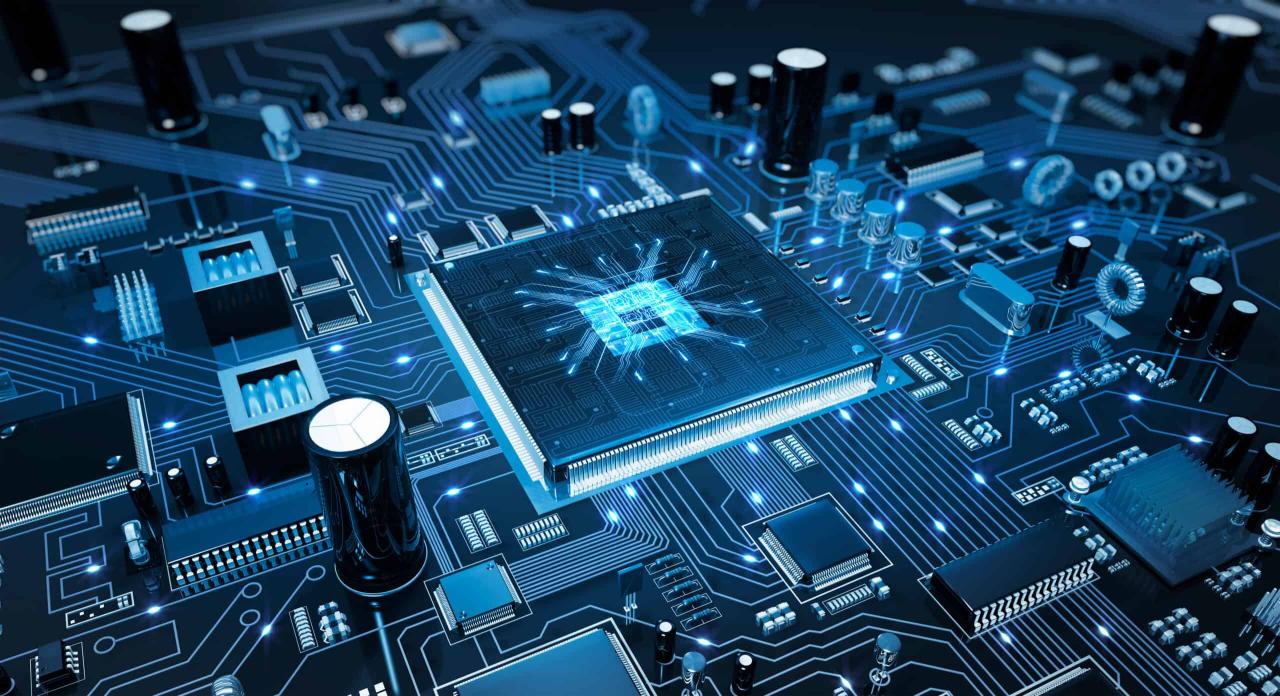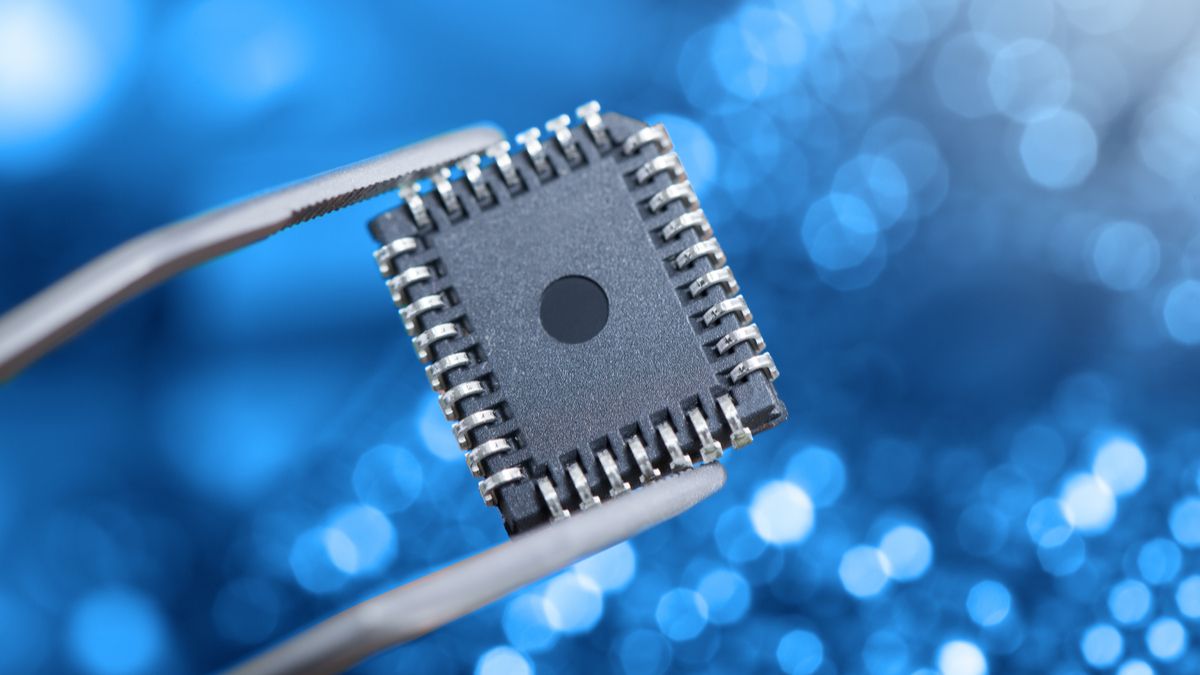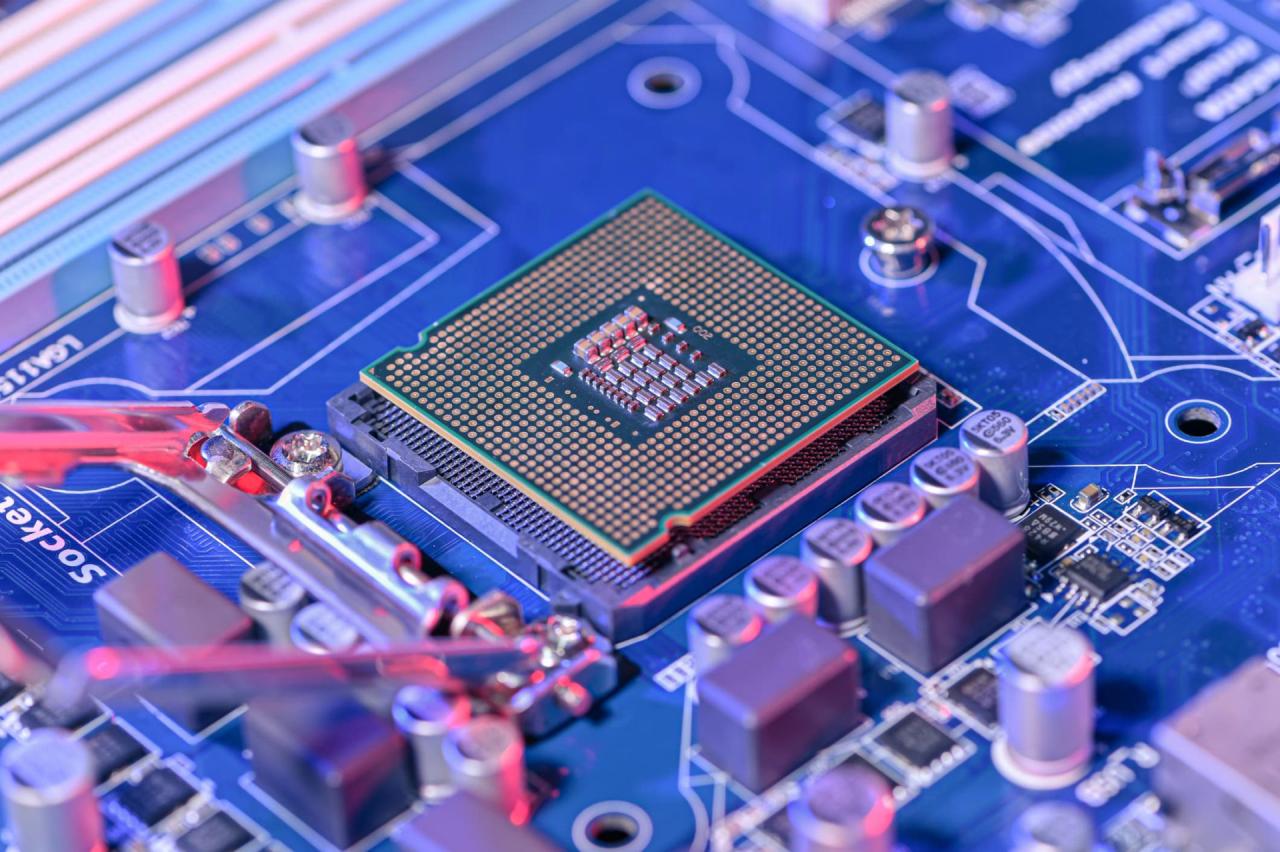Chip iPhone has become synonymous with cutting-edge technology, playing a pivotal role in enhancing the overall performance of Apple’s flagship devices. From powering advanced camera systems to optimizing battery life, the evolution of chip technology in iPhones has continually set benchmarks for the smartphone industry.
As we delve deeper into the world of chip iPhone, we will explore the various types of chips used, the innovations introduced in the latest models, and how these advancements significantly improve user experience. Additionally, we will unravel the intricate manufacturing processes, collaborations, and future trends that shape the future of iPhone technology.
Overview of Chip Technology in iPhones

Apple’s iPhone has continually set the benchmark for smartphone performance, much of which can be attributed to its cutting-edge chip technology. The chips used in iPhones play a crucial role in determining not only the device’s speed and efficiency but also its overall functionality and capability. Each generation of chips has introduced significant advancements, resulting in a seamless user experience that enhances both everyday tasks and demanding applications.
The primary types of chips found in iPhones include the central processing unit (CPU), graphics processing unit (GPU), and various specialized processors like the Neural Engine and image signal processors. The CPU is responsible for executing instructions and managing operations, while the GPU handles graphics rendering for gaming and visual applications. The Neural Engine is specifically designed to perform machine learning tasks efficiently, enabling features like facial recognition and augmented reality. Meanwhile, image signal processors improve photo and video quality by optimizing image capture and processing.
Latest Chip Models and Improvements
The most recent addition to Apple’s chip lineup is the A17 Pro chip, which debuted in the iPhone 15 series. The A17 Pro represents a significant leap in performance and efficiency, built on a 3nm process technology. This advancement not only allows for more transistors on the chip but also enhances power efficiency, enabling longer battery life and improved thermal management.
Key enhancements in the A17 Pro chip include:
- Increased CPU Performance: With a 6-core CPU configuration, the A17 Pro delivers up to 10% faster performance compared to its predecessor, the A16 Bionic, while maintaining lower power consumption.
- Advanced GPU Capabilities: The new 6-core GPU architecture provides a remarkable boost in graphics performance, making the iPhone 15 capable of handling console-level gaming experiences with ray tracing technology.
- Enhanced Neural Engine: The 16-core Neural Engine is designed for improved machine learning performance, achieving up to 2x faster processing speeds for AI tasks, which strengthens features like real-time language translation and advanced photo editing.
- ProRes Video Processing: The A17 Pro supports ProRes video encoding, allowing users to capture high-quality video directly from their iPhones with professional-grade cinematic features.
The role of chip technology is pivotal in enhancing the overall performance of the iPhone. For instance, the synergy between the CPU, GPU, and Neural Engine allows for smooth multitasking, high-definition gaming, and efficient machine learning applications, which all contribute to a seamless user experience. Furthermore, improvements in these chips often lead to enhanced battery life, as more efficient processing translates to less power consumption.
“The integration of advanced chip technology in iPhones not only liberates performance but also ensures that the device remains future-proof amid rapid technological advancements.”
The commitment to innovation in chip technology is evident in Apple’s continuous enhancements, which position the iPhone as a leader in a highly competitive market. As newer models are released, users can expect to see more powerful chips that push the boundaries of what smartphones can achieve.
Manufacturing Process of iPhone Chips
The manufacturing process of chips for iPhones is a highly intricate and technologically advanced series of steps that ensures the production of reliable, efficient, and powerful processors. These chips are at the heart of iPhones, enabling functionalities that users rely on daily. The collaboration between Apple and leading semiconductor manufacturers plays a significant role in this process, encompassing a variety of challenges that are met with innovative solutions.
Steps in the Manufacturing Process
The journey of iPhone chip manufacturing begins with rigorous design and planning, followed by several critical stages to produce high-performance components. The primary steps involved in this process are as follows:
1. Design and Simulation: Engineers employ sophisticated software tools to create chip designs, which are then simulated to test their performance before actual production begins.
2. Wafer Fabrication: This step involves creating silicon wafers, which serve as the base for the chips. Wafers undergo photolithography, where light patterns etch the designs onto the silicon.
3. Ion Implantation: Here, ions are introduced into the wafer to alter its electrical properties, which is essential for creating transistors that form the chip’s circuitry.
4. Etching and Deposition: Layers of materials are added and then etched away to create the intricate structures of the transistors. This is repeated multiple times to build the layers necessary for functional chips.
5. Packaging: After fabrication, the chips are diced into individual units, tested for quality, and then packaged. This final step protects the chips and prepares them for integration into devices.
Collaboration with Chip Manufacturers
Apple’s strategy for chip production includes strong partnerships with renowned semiconductor manufacturers such as TSMC (Taiwan Semiconductor Manufacturing Company). These collaborations are vital for leveraging state-of-the-art fabrication technologies and ensuring high yield rates.
– Joint Development Programs: Apple and TSMC work closely on development projects to innovate new chip architectures and processes, allowing for advancements in speed and efficiency.
– Capacity Management: Apple secures production capacity with TSMC well in advance, ensuring that their demand for chips aligns with manufacturing capabilities. This foresight helps mitigate potential supply chain disruptions.
– Technology Sharing: Collaborative research initiatives between Apple and its manufacturing partners lead to breakthroughs in chip technology, including the development of smaller process nodes, which enhance performance while reducing power consumption.
Challenges in Chip Production
The manufacturing process of iPhone chips is fraught with challenges that necessitate advanced solutions. Some of the primary challenges faced include:
– Yield Improvement: Achieving high yield rates is critical to profitability. Manufacturers continuously refine processes and methodologies to minimize defects during fabrication.
– Supply Chain Disruptions: Global events, such as the COVID-19 pandemic, can significantly impact the supply chain. Apple has adapted by diversifying its supplier base and stockpiling essential materials.
– Technological Complexity: As chips become more advanced, the complexity of the manufacturing processes increases. Continuous investment in research and development is required to keep pace with innovations in semiconductor technology.
– Environmental Concerns: The chip manufacturing process generates substantial waste and consumes large amounts of energy. Manufacturers are working on adopting cleaner technologies and more sustainable practices to minimize their environmental footprint.
“The synergy between design innovation and manufacturing excellence is crucial in producing the powerful chips that drive iPhone performance.”
Impact of Chip Technology on iPhone Features: Chip Iphone

Advancements in chip technology have had a significant impact on the overall functionality and capabilities of iPhones. With each new generation of iPhone chips, Apple has not only enhanced performance but also unlocked new features that enrich the user experience. This evolution is particularly evident in camera technology, battery life, and the integration of new functionalities in iOS and applications.
Influence on Camera Technology
The integration of advanced chips has revolutionized the camera systems in iPhones, enabling features that were previously unimaginable. The latest chips, such as the A15 Bionic and beyond, include dedicated image signal processors (ISPs) that enhance photo and video quality. These processors facilitate computational photography techniques which significantly improve image clarity and detail.
– Advanced features enabled by chip technology include:
-
Night mode
– Enhances low-light photography by utilizing advanced algorithms to brighten images without sacrificing detail.
-
Smart HDR
– Combines multiple exposures to create photos with improved dynamic range, preserving highlights and shadows.
-
Deep Fusion
– Utilizes machine learning to optimize texture and details in every pixel across various lighting conditions.
-
ProRAW and ProRes
– Provides professional-grade editing capabilities for photographers and videographers, allowing for greater control over image processing.
These advancements have made iPhones a preferred choice for both casual users and professional photographers alike, showcasing the crucial role of chip technology in enhancing photographic capabilities.
Enhancements in Battery Life
Chip improvements have also played a pivotal role in extending battery life across iPhone models. The transition from older chip designs to more efficient architectures has resulted in significant energy savings.
– Factors contributing to enhanced battery performance include:
-
Efficiency cores
– Chips now include energy-efficient cores that handle lighter tasks, reducing overall power consumption.
-
Dynamic voltage and frequency scaling
– The chips can adjust performance based on usage, optimizing battery usage without compromising speed.
-
Advanced manufacturing processes
– Utilizing smaller nanometer processes leads to reduced heat and improved efficiency, allowing for longer usage on a single charge.
As a result, users can enjoy more screen time, reduced charging frequency, and overall improved battery life, which address one of the most common concerns among smartphone users.
Enabling New Features in iOS and Applications
The evolution of chip technology has empowered developers to introduce innovative features and enhance existing ones within iOS and applications. The increased processing power and capabilities of the chips facilitate smoother multitasking and advanced functionalities.
– Notable features enabled by chip advancements include:
-
Augmented Reality (AR)
– The chips support ARKit, allowing developers to create immersive AR experiences that blend digital content with the real world.
-
Machine Learning
– On-device machine learning capabilities enable features like real-time language translation and personalized Siri recommendations.
-
Enhanced Gaming Experiences
– High-performance chips support graphics-intensive games with improved frame rates and lower latency, making mobile gaming more enjoyable.
These technological advancements not only enrich the user experience but also encourage developers to innovate, propelling the iPhone ecosystem forward.
Future Trends in iPhone Chip Development

The evolution of chip technology in iPhones continues to shape the future of mobile computing, with Apple leading the charge in innovation. As the company invests in research and development, upcoming chip technologies are set to redefine performance benchmarks while enhancing user experiences. This discussion focuses on anticipated advancements in iPhone chips, their potential repercussions on the smartphone market, and the ongoing trends in energy efficiency and performance improvements.
Upcoming Chip Technologies and Their Potential Impact
Apple’s commitment to developing proprietary chips has positioned it to introduce groundbreaking technologies that could significantly enhance iPhone functionality. One notable area of advancement is the integration of 5G capabilities directly into chips, which supports faster data speeds and improved connectivity. The anticipated A17 chip, reportedly built on a 3nm process, promises not only to boost processing power but also to facilitate more complex tasks such as machine learning and augmented reality applications.
Key upcoming technologies include:
- Unified Memory Architecture: Integrating RAM and storage into a single pool may allow for more efficient data processing and multitasking capabilities.
- Advanced AI Processing: Enhanced Neural Engine capabilities will enable smarter features, such as real-time language translation and advanced photographic enhancements.
- Greater Integration of Lidar Technology: Future chips may further embed Lidar sensors, enriching augmented reality experiences and spatial awareness functions.
Implications of Custom Chip Designs on the Smartphone Market, Chip iphone
Apple’s approach to developing custom chips significantly disrupts the traditional smartphone market. By opting for in-house designs, the company can optimize hardware and software integration, providing superior performance and efficiency compared to competitors relying on generic chipsets. This strategy not only enhances user experience but also sets a high bar for other manufacturers.
The implications for the smartphone market are profound:
- Increased Competition: Other manufacturers may feel pressured to invest in custom chip designs to keep pace with Apple’s innovations, potentially leading to a more dynamic market.
- Supply Chain Control: By reducing reliance on third-party chip suppliers, Apple can ensure better performance and security in its devices.
- Pricing Strategies: Custom chips might allow for better cost management, influencing pricing strategies across the smartphone segment.
Trends in Energy Efficiency and Performance Enhancements
As the demand for more powerful smartphones rises, energy efficiency remains a critical focus in chip development. Future iPhone chips are expected to employ cutting-edge technologies to deliver higher performance while minimizing power consumption. This dual focus on performance and efficiency will be vital as users increasingly rely on their devices for more intensive applications, such as gaming and video editing.
Key trends to watch include:
- Dynamic Voltage and Frequency Scaling: This technique adjusts power usage based on real-time workload demands, optimizing performance without draining battery life.
- Advanced Lithography Techniques: The shift to smaller manufacturing processes, such as 3nm and beyond, promises to produce chips that are not only faster but also consume less power.
- AI-Driven Power Management: Future chips may incorporate artificial intelligence to manage energy consumption intelligently, adapting to user habits for enhanced battery longevity.
As Apple continues to innovate with proprietary chip technology, the implications on performance, efficiency, and user experience will shape the future of iPhones and the broader smartphone market.
Quick FAQs
What types of chips are used in iPhones?
iPhones primarily use custom-designed A-series chips, which handle processing tasks, as well as specialized chips for managing battery and connectivity.
How does chip technology affect battery life?
Advancements in chip technology lead to more efficient power management, optimizing energy usage and extending battery life significantly.
What is the significance of custom chip designs?
Custom chip designs allow Apple to tailor performance and efficiency specifically for their devices, enhancing overall functionality and user experience.
Are there any challenges in chip manufacturing?
Yes, challenges include maintaining quality control, sourcing materials, and meeting production timelines, all of which require close collaboration with manufacturers.
What future trends can we expect in iPhone chips?
Future trends may include improved energy efficiency, enhanced processing power, and advancements in AI capabilities integrated within the chips.
The Samsung Galaxy S 4 remains a classic in the smartphone world, known for its sleek design and impressive features. Its vibrant display and user-friendly interface made it a popular choice among tech enthusiasts. While newer models have since emerged, the Galaxy S 4 still holds a special place for those who appreciate its robust performance and reliability.
As technology continues to evolve, the upcoming Samsung S 19 is generating excitement among fans. Anticipated for its cutting-edge capabilities and enhanced camera features, this model promises to elevate the user experience. With each iteration, Samsung consistently pushes the boundaries of innovation, making the S 19 a highly awaited addition to the smartphone lineup.